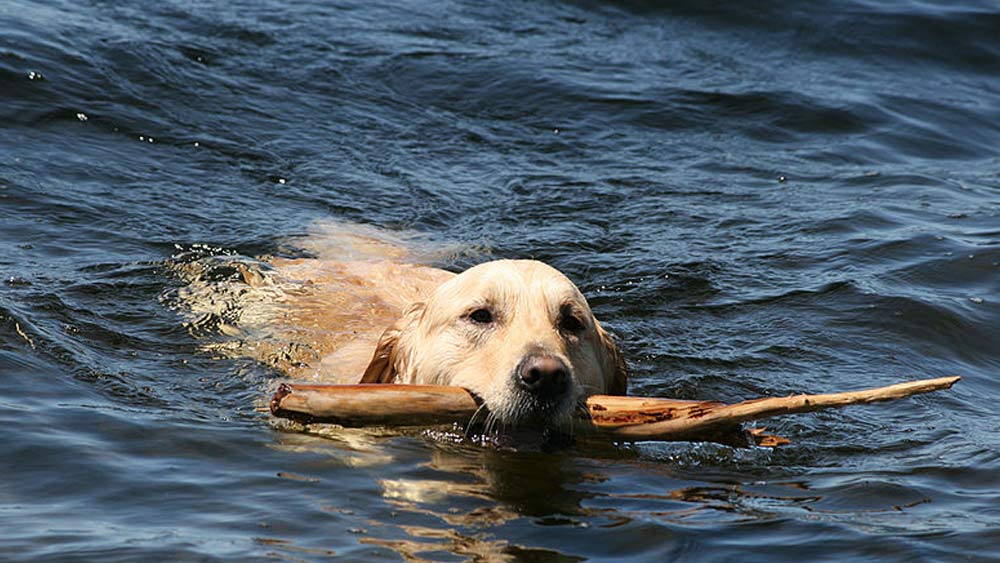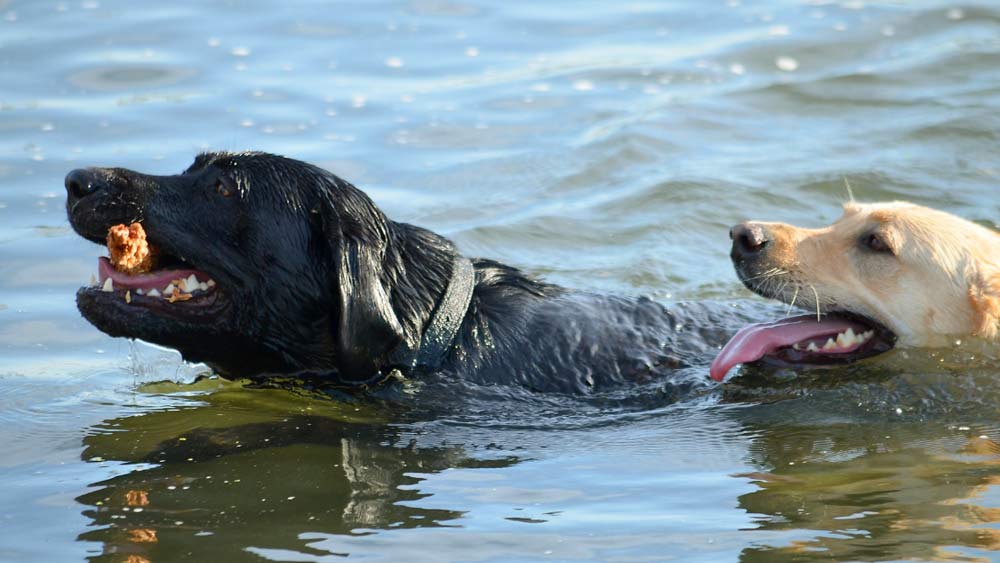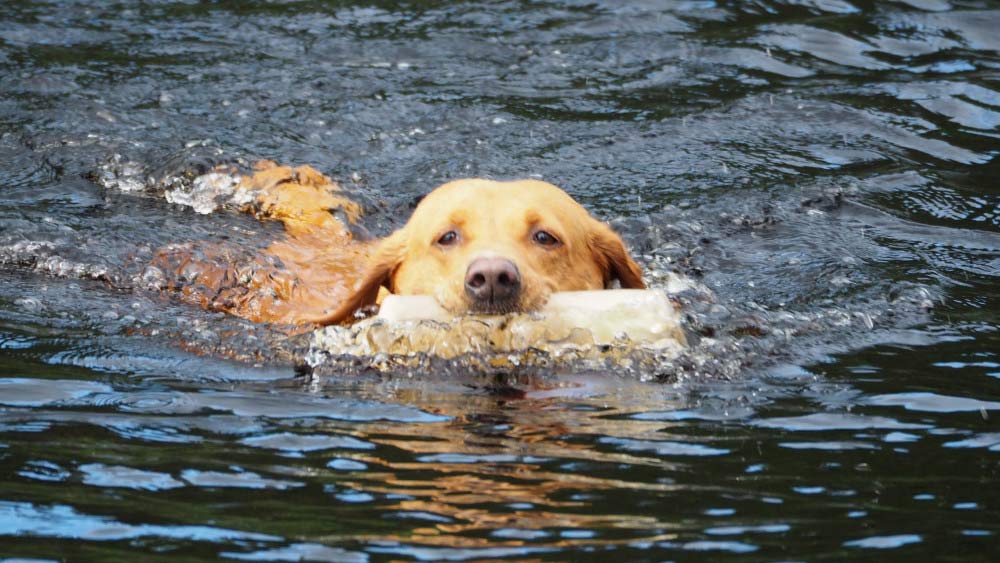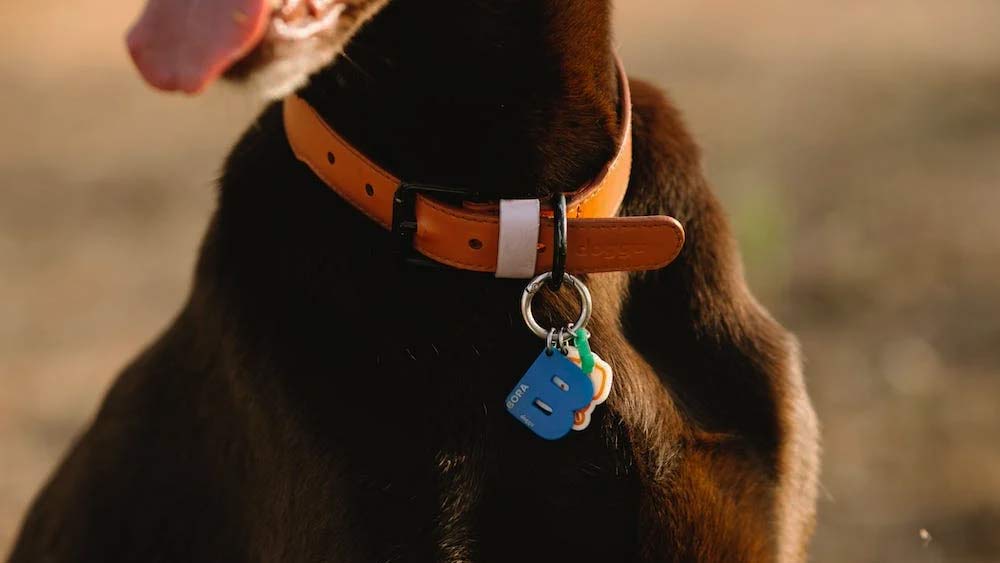The short answer is yes. Labrador Retrievers were bred to assist waterfowl hunters. As a result, they have exceptional swimming abilities. They do, however, have the ability to swim intuitively in addition to the ability to fetch. As a result, Labrador Retrievers have all of the physical characteristics and attributes that enable them to be excellent swimmers.
Read More: 28 Reasons Why Labradors are Great Pets!
Are Labrador Retrievers good swimmers?
Yes, they are good swimmers for the following reasons:
- Hydrophilic coating
- Strong legs
- Form of body
- High Energy levels
- Size appropriate
- Strong instincts
Because they are medium in size, they are not too heavy to float. When swimming, their legs are strong enough and large enough to support their body.
They also have a dense second coat. Water cannot pass through. As a result, it can withstand moisture and avoid becoming clogged. In cooler water, the undercoat plays an important role in keeping the skin warm and dry.
Labrador retrievers are excellent swimmers due to their high energy levels, which allow them to swim for longer periods of time without becoming tired or putting very much strain on the body.
Read More: Can Labradors Swim in Cold Waters?
Essential tips for teaching your Labrador to swim
Swimming is risky. Water-loving dogs may get into mischief. Swimmers should always prioritize safety, whether in a pool, ocean, lake, river, or stream. You can take your dog swimming safely using these methods.
Start Young (after 3 months)
Young Labrador retrievers, like humans, are unable to swim. Generally speaking, puppies under the age of three months old are not developmentally ready to swim. After your Labrador puppy reaches 3 months of age, you can start taking him swimming less frequently.
Read More: 19 Ways to Encourage Good Behavior in Your Puppy
Slow and steady wins the race
Don’t assume your dog can swim when you first introduce him to water. Some dogs panic when they get wet and sink like a rock. Morning soaks in the tub are an excellent way to start the day. Ideally, you’d like to add a couple of inches gradually over a few weeks. It can take up to a year for a dog to develop into a confident swimmer in some cases. Don’t let a swimmer swim as far as he wants before you’ve checked out his skills.
Read More: how to train your Labrador Retriever: 15 most essential tips
At first, Stay Leashed
Keep your dog’s leash on at all times when teaching him to swim. You can get him back quickly if necessary.
Don’t force your dog to swim.
There are some Labradors who despise water. If your dog is shaking, whining, crying, urinating on himself, or attempting to flee, pay attention. Move slowly and try to reassure him, but be prepared to stop if he expresses hesitation.
Even if your dog enjoys swimming, don’t make him do it. He could be hot, tired, irritable, hungry, thirsty, or grumpy. This will be a stressful situation for both of you.
Read More: Do dogs catch colds? Fully Explained!
Begin planning a trip to the beach.
Don’t leave Fido at home when you and your friends head to the beach. You and your dog are welcome to visit the beach. Allowing your dog to swim should be done with caution. In the event of rough seas, don’t let them swim too far. Avoid all marine life, but especially jellyfish. The ocean contains more dangerous organisms than freshwater ponds and lakes.
Be Wary of the Water
Praise and treat your dog before and after swimming lessons. When you’re finished, rinse your dog with fresh water and pet him. Because pool chemicals, sand, and debris can all cause irritation, your dog’s skin and eyes will thank you for taking this precaution before entering the pool.
After your pet has emerged from the water, keep an eye on it. Ear infections caused by parasites and bacteria often appear gradually over several days. Keep an eye out for unusual behavior in your dog. If you notice anything out of the ordinary, you should take him to the vet.
Avoid any potential water hazards.
Before diving in, make sure the water is safe for swimming. In the summer, both you and your dog are vulnerable to bacteria.
Pets should not be introduced to unfamiliar waters. A high concentration of bacteria, shallowness, rip currents, undertows, parasites, broken glass, and stinging jellyfish are all potential hazards.
Read More: 21 Common Dog Diseases (and What To Do)
Copyright Wikimedia Commons
Benefits of letting your Labrador retriever swim
It promotes health.
Regular swimming sessions will greatly benefit your Labrador retriever. Swimming for one minute is equivalent to four minutes of jogging. Swimming improves skin and coat health by increasing circulation, metabolism, and immune system function.
Beneficial to the joints
When your dog is submerged, the water supports its weight, reducing the stress on its skeletal system that would otherwise be caused by running or playing on dry land. Swimming benefits dogs by encouraging them to move in ways that are different from their normal routine on land, thus increasing their range of motion. Swimming can help dogs with mobility issues such as arthritis.
It’s a way for them to unwind.
Swimming will benefit both your Labrador retriever’s mental and physical health. Canines, like humans, require play and entertainment to maintain their intelligence and happiness. A dog is more likely to look forward to going to bed after a day of swimming when it is both tired and happy.
Swimming in warm water can help to relieve pain.
Swimming in warm water is beneficial to dogs because it helps build muscle, improves circulation, and reduces joint stress.
It’s similar to a weight-loss workout.
Swimming is a safe and efficient way for overweight Labrador retrievers to burn calories and increase metabolism. Regular swimming sessions and a healthy diet can help dogs who are overweight.
Are Labrador retrievers natural swimmers?
Even as young puppies, Labrador retrievers have natural swimming abilities. In the past, all dogs were bred for a specific function, duty, or job.
Labrador Retrievers are no exception. To do this successfully, the Labrador Retriever needed to be an excellent swimmer. Because their forefathers were raised to retrieve birds and other game from lakes and rivers, Labrador Retrievers are accustomed to being in the water.
They enjoy being in the water, but they also have physical characteristics that make them good swimmers.
Read More: Labrador Retriever History : What you didn’t know!
Copyright Flickr
How long can Labrador retrievers survive underwater?
Underwater dogs are able to keep their breath. While babies dive beneath the water to retrieve a toy or simply for fun, an innate survival instinct tells them to keep their breath. This herbal response works similarly to how dogs close their eyes after entering water.
A dog can hold its breath for 5 to 8 seconds on average. However, this time may vary depending on a number of factors. Puppies with short snouts, such as Pugs, will find it more difficult to hold their breath.
While your dog’s face is covered in water, there is a direct physical reaction. When animals are in the water, they experience what is known as the Mammalian Diving Response (MDR).
The primary goal of the mammalian diving reaction is to limit the animal’s oxygen consumption. As a result, when mammals submerge underwater to maintain oxygen, their blood arteries narrow. Your heart, brain, and other vital organs can prioritize getting enough oxygen as a result of this reaction.
When should a Labrador Retriever start swimming?
Swimming should be avoided until they are 2 to 5 months old.
Under two months old Labrador retrievers lack the strength and muscle development required for sustained buoyancy. Because of their sensitive skin, they may be injured by cold temperatures and harsh pool chemicals such as chlorine.
Although you should delay starting swimming lessons, your dog does not have to wait to develop a lifelong love of water. To make bath time more enjoyable, introduce toys and allow your puppy to walk around in an inch of water. This will allow them to get used to having wet paws.
Can Labrador Retrievers swim a long distance?
Labrador retrievers can swim for about 50 minutes before becoming tired, and they can travel a long distance during that time. They have tremendous endurance due to their high energy levels, as well as several physical characteristics such as powerful hind legs and a double coat that keeps them warm and dry.
Read More: How much exercise do Labradors need? (0 to 100 explained)
Are Labrador retrievers waterproof?
The Labrador Retriever is ideal for outdoor activities due to its thick, beautiful, and waterproof coat. Because of their intelligence and eagerness, Labrador Retriever training is enjoyable and simple.
Water is not a problem for Labrador retrievers. It’s just their coats. Unlike many dog breeds, the Labrador was bred to have a double coat (as opposed to a single coat). There are two layers of fur for maximum warmth and protection.
A Labrador Retriever’s undercoat has a wool-like texture. In reality, it’s intended to keep the dog warm, just like your wool coat. To put it another way, these dogs are better equipped to spend more time swimming in cold water.
The topcoat, also known as “guard hairs,” is the fur’s second layer. Furthermore, as the name implies, the topcoat was designed to protect the Labrador Retriever from dirt and debris. However, it repels water, keeping your dog’s skin smooth and dry.
These coat characteristics provide significant advantages to Labrador Retrievers in the water.
Read More: Do Labrador retrievers shed a lot? Causes & how to reduce it!
Conclusion
Dog swimming can benefit in a variety of ways, including:
- Allowing to let go of extra energy
- Calorie expenditure for weight loss
- Bolster joints and muscles
- Reducing discomfort in dogs with arthritis or joint issues
- Keeping cool when it’s hot
Even though Labrador Retrievers have natural swimming instincts, allowing them to swim unsupervised is not a good idea.
You’ll need a personal flotation device (PFD) or life jacket that fits your dog properly and allows your dog to move freely while wearing it. A life jacket with strong clips and adjustable straps is recommended.
Put on the life jacket when you’re at home or on walks to get your dog used to wearing it for extended periods of time.
It is recommended to begin training at a pool with plenty of room for the dog to run around because it will be safer.
Use a toy or a treat to entice your dog into the water, making it feel good about going in and more likely to do so on its own.
Throwing or forcing your dog into the pool could scare it away and endanger its life.
Let your dog grow used to being in the water and getting wet by starting in a shallow pool region.
We hope this article about Labrador retrievers swimming was helpful. Please let us know in the comments section if you have suggestions or helpful tips to share.
Read More: How to Raise a Labrador! (All Questions Answered)
Read More: Are Labrador retrievers good hunting dogs? (0 to 100 explained)
Read More: Owning a Labrador: 27 Pros & 20 Cons!
Read More: Golden vs. Labrador retriever & 10 main differences
Read More: Labrador vs flat-coated retriever: Compared in Depth























